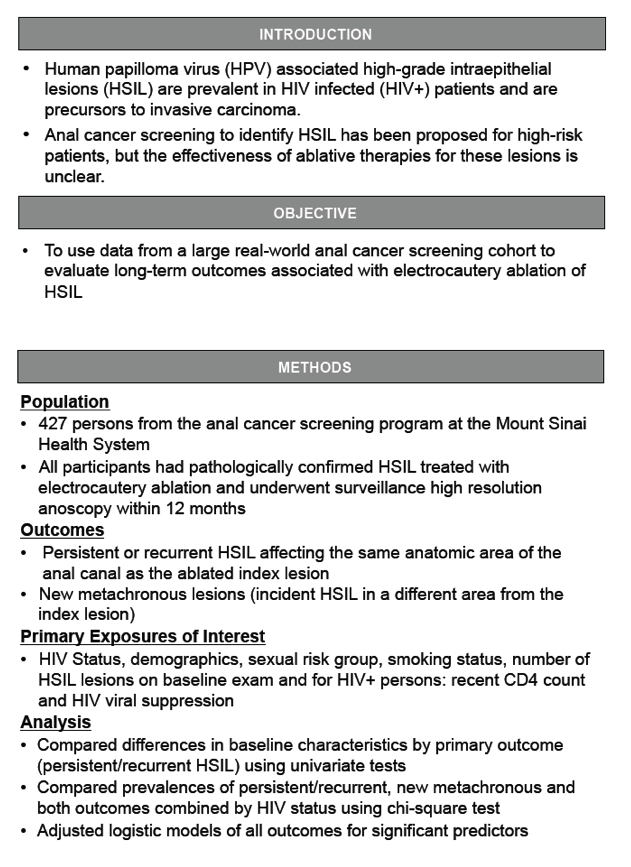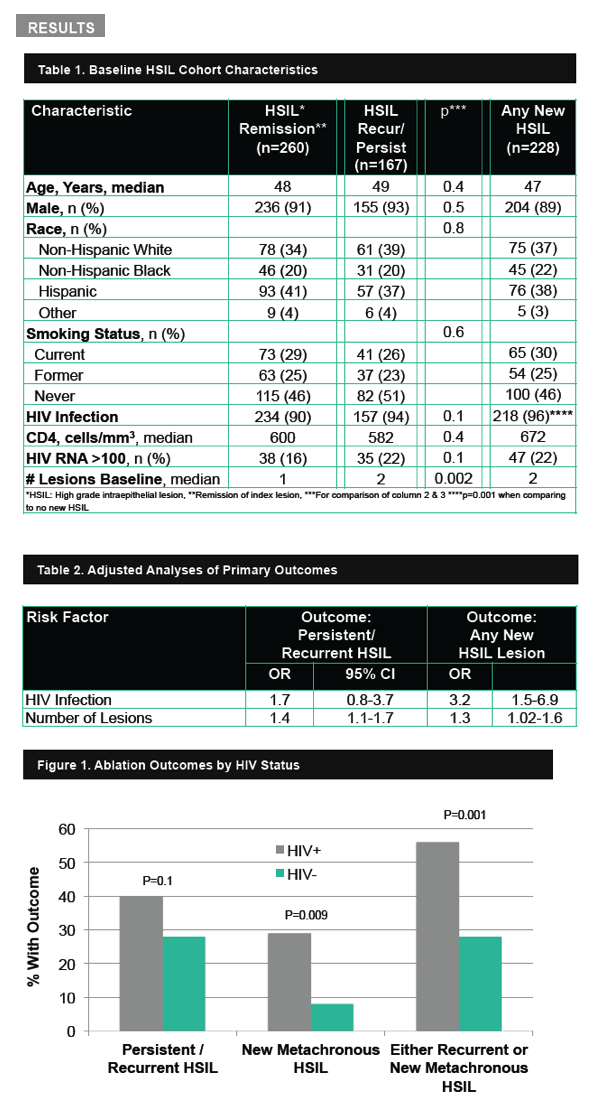 |
 |
 |
| |
Ablation Outcomes for HIV Infected and Uninfected Patients with High-Grade Anal Dysplasia
|
| |
| |
Reported by Jules Levin
CROI 2018
Keith Sigel, MD, PhD, Yuxin Liu, MD, PhD, Michael Gaisa, MD, PhD
Icahn School of Medicine at Mount Sinai, New York, NY

Program Abstract:
Human papilloma virus (HPV) associated high-grade intraepithelial lesions (HSIL) are the putative anal cancer (AC) precursors and are highly prevalent in HIV infected (HIV+) patients. Screening and local ablation of anal HSIL has been proposed for high-risk patients but is associated with substantial recurrence rates. Using data from a large AC screening cohort, we evaluated long-term outcomes following HSIL ablation.
We identified 427 participants in our anal dysplasia screening program with histologically confirmed HSIL who were treated with electrocautery ablation. Using high-resolution anoscopy, surveillance was conducted within 12 months to assess treatment response. HSIL identified in the same anatomic region of the anal canal as the previously ablated index lesion was defined as persistent, whereas new HSIL independent from the index lesion were defined as metachronous. We also defined overall recurrence as the presence of either persistent or new metachronous lesions on follow-up. Baseline demographic information, sexual behaviors, smoking, HIV biomarkers, and number of HSIL were abstracted from a clinical database. Using unadjusted and multivariable analyses, we then examined frequency of outcomes and predictors of HSIL recurrence.
Our cohort largely consisted of men who have sex with men (93%) and 91% of subjects were HIV+. HSIL persistence after ablation was 39%(Table 1; 95% confidence interval [CI]: 34%-43%) and did not differ significantly by HIV status or sexual behavior. No invasive cancers were detected on follow-up. Metachronous HSIL at follow-up was found in 27% (95% CI: 23%-31%) of subjects. The combined outcome of persistent or metachronous HSIL (overall recurrence) occurred in 53% and was more frequent in HIV+ persons (56% vs. 28%; p=0.001). 194 (45%) subjects had more than one HSIL lesion on baseline examination; this group had a higher risk of HSIL persistence than those with solitary lesions (48% vs. 32%; p=0.001). No other factors were associated with risk of HSIL persistence, including age, race/ethnicity, smoking, and (among HIV+ subjects) baseline HIV viral suppression and CD4 count. HIV infection was associated (odds ratio 3.2; 95% CI: 1.5-6.9) with overall recurrence of HSIL after adjustment for baseline number of lesions.
In our cohort, over a third of anal HSIL persisted after electrocautery ablation. HIV+ patients with multiple index lesions at baseline are at a higher risk of recurrence and may require careful surveillance.



|
| |
|
 |
 |
|
|